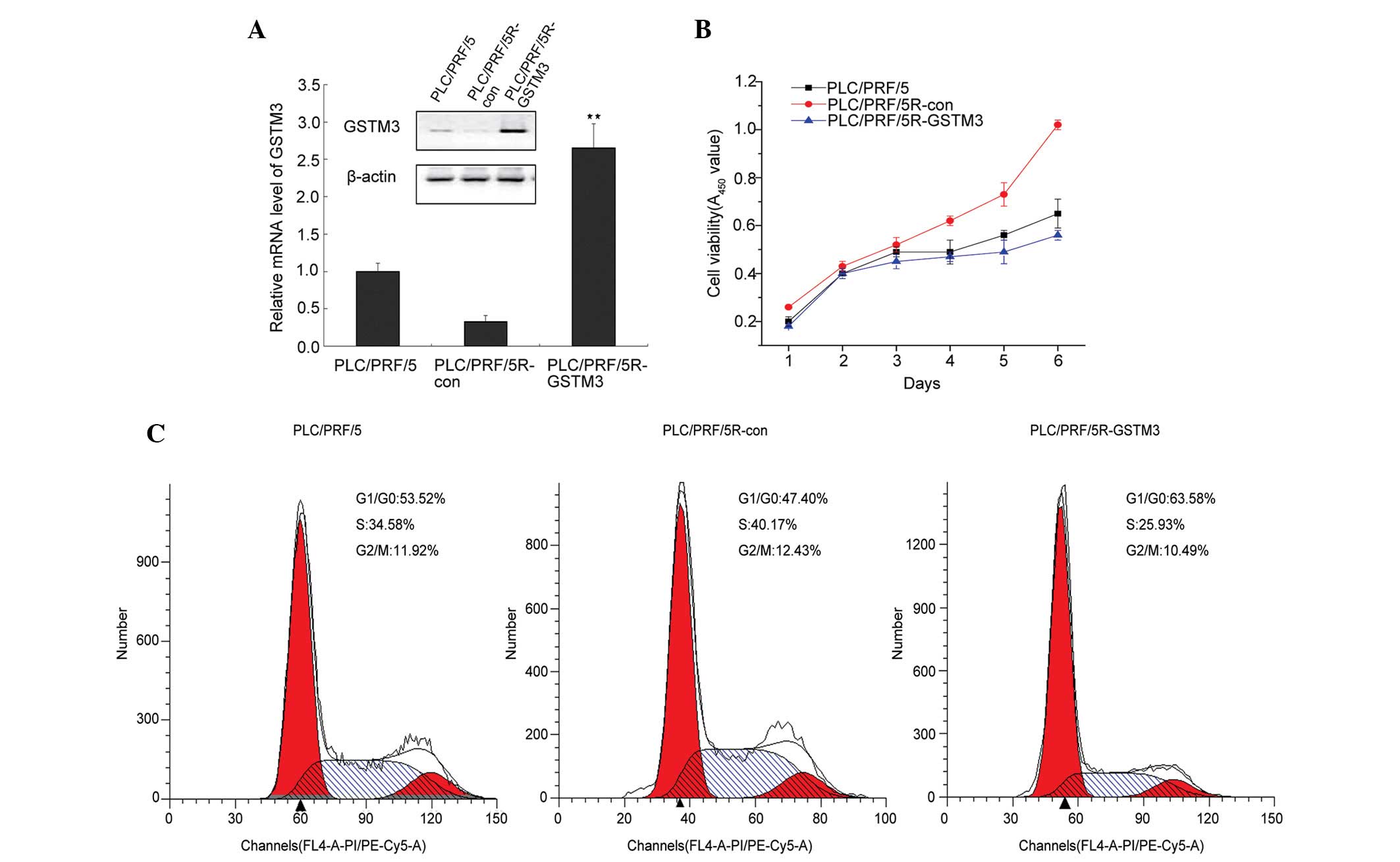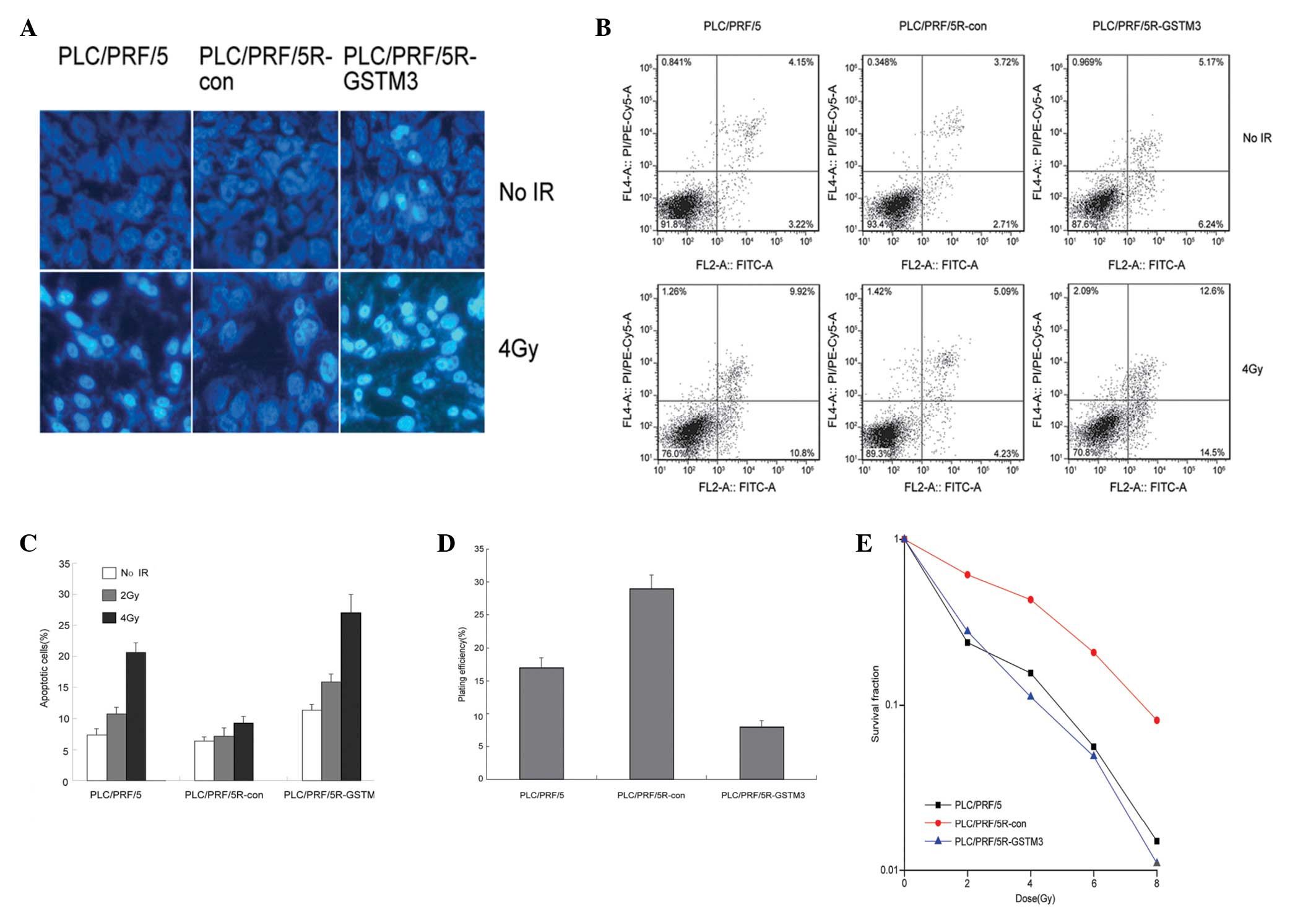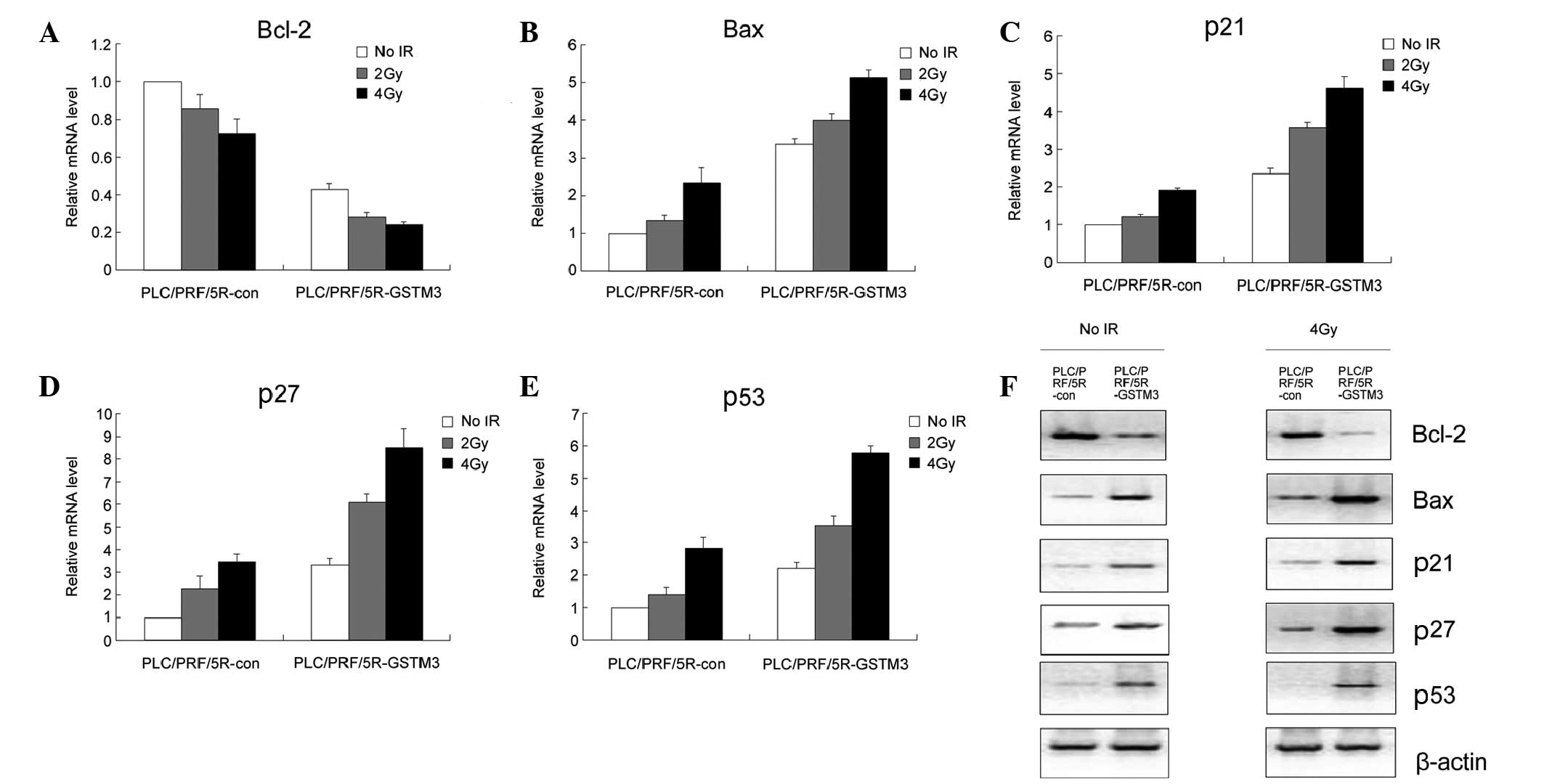|
1
|
El-Serag HB: Hepatocellular carcinoma. N
Engl J Med. 365:1118–1127. 2011.
|
|
2
|
Kim JJ and Tannock IF: Repopulation of
cancer cells during therapy: an important cause of treatment
failure. Nat Rev Cancer. 5:516–525. 2005.
|
|
3
|
Leveille-Webster CR and Arias IA:
Establishment and serial quantification of intrahepatic xenografts
of human hepatocellular carcinoma in severe combined
immunodeficiency mice, and development of therapeutic strategies to
overcome multidrug resistance. Clin Cancer Res. 2:695–706.
1996.
|
|
4
|
Ryoo K, Huh SH, Lee YH, et al: Negative
regulation of MEKK1-induced signaling by glutathione S-transferase
Mu. J Biol Chem. 279:43589–43594. 2004.
|
|
5
|
Lu M, Xia L, Luo D, Waxman S and Jing Y:
Dual effects of glutathione-S-transferase pi on
As2O3 action in prostate cancer cells:
enhancement of growth inhibition and inhibition of apoptosis.
Oncogene. 23:3945–3952. 2004.
|
|
6
|
Adler V, Yin Z, Fuchs SY, et al:
Regulation of JNK signaling by GSTp. EMBO J. 18:1321–1334.
1999.
|
|
7
|
Yin Z, Ivanov VN, Habelhah H, Tew K and
Ronai Z: Glutathione S-transferase p elicits protection against
H2O2-induced cell death via coordinated
regulation of stress kinases. Cancer Res. 60:4053–4057. 2000.
|
|
8
|
Yu KD, Fan L, Di GH, et al: Genetic
variants in GSTM3 gene within GSTM4-GSTM2-GSTM1-GSTM5-GSTM3 cluster
influence breast cancer susceptibility depending on GSTM1. Breast
Cancer Res Treat. 121:485–496. 2010.
|
|
9
|
Tan X, Zhai Y, Chang W, et al: Global
analysis of metastasis-associated gene expression in primary
cultures from clinical specimens of clear-cell renal-cell
carcinoma. Int J Cancer. 123:1080–1088. 2008.
|
|
10
|
Smith L, Welham KJ, Watson MB, et al: The
proteomic analysis of cisplatin resistance in breast cancer cells.
Oncol Res. 16:497–506. 2007.
|
|
11
|
Livak KJ and Schmittgen TD: Analysis of
relative gene expression data using real-time quantitative PCR and
the 2−ΔΔCt method. Methods. 25:402–408. 2001.
|
|
12
|
Chen YJ, Lin CP, Hsu ML, et al: Sonic
hedgehog signaling protects human hepatocellular carcinoma cells
against ionizing radiation in an autocrine manner. Int J Radiat
Oncol Biol Phys. 80:851–859. 2011.
|
|
13
|
Urick ME, Chung EJ, Shield WP III, et al:
Enhancement of 5-fluorouracil-induced in vitro and in vivo
radiosensitization with MEK inhibition. Clin Cancer Res.
17:5038–5047. 2011.
|
|
14
|
Piao LS, Hur W, Kim TK, et al:
CD133+ liver cancer stem cells modulate radioresistance
in human hepatocellular carcinoma. Cancer Lett. 315:129–137.
2012.
|
|
15
|
Mannervik B, Awasthi YC, Board PG, et al:
Nomenclature for human glutathione transferases. Biochem J.
282:305–306. 1992.
|
|
16
|
Salinas-Souza C, Petrilli AS and de Toledo
SR: Glutathione S-transferase polymorphisms in osteosarcoma
patients. Pharmacogenet Genomics. 20:507–515. 2010.
|
|
17
|
Chatzimichalis M, Xenellis J,
Tzagaroulakis A, et al: GSTT1, GSTM1, GSTM3 and NAT2 polymorphisms
in laryngeal squamous cell carcinoma in a Greek population. J
Laryngol Otol. 124:318–323. 2010.
|
|
18
|
Golka K, Schmidt T, Seidel T, et al: The
influence of polymorphisms of glutathione S-transferases M1 and M3
on the development of human urothelial cancer. J Toxicol Environ
Health A. 71:881–886. 2008.
|
|
19
|
Jain M, Kumar S, Lal P, et al: Role of
GSTM3 polymorphism in the risk of developing esophageal cancer.
Cancer Epidemiol Biomarkers Prev. 16:178–181. 2007.
|
|
20
|
Hao YX, Zhong H, Yu PW, et al: Effects of
HIF-1alpha on human gastric cancer cell apoptosis at different
CO(2) pressures. Clin Exp Med. 9:139–147. 2009.
|
|
21
|
Liu F, Wei YG, Luo LM, et al: Genetic
variants of p21 and p27 and hepatocellular cancer risk in a Chinese
han population: a case-control study. Int J Cancer. 132:2056–2064.
2013.
|
|
22
|
Lamore SD and Wondrak GT: Zinc pyrithione
impairs zinc homeostasis and upregulates stress response gene
expression in reconstructed human epidermis. Biometals. 24:875–890.
2011.
|
|
23
|
Cabello CM, Lamore SD, Bair WB III, et al:
DCPIP (2,6-dichlorophenolindophenol) as a genotype-directed redox
chemotherapeutic targeting NQO1*2 breast carcinoma. Free
Radic Res. 45:276–292. 2011.
|
|
24
|
He HB, Wu XL, Yu B, et al: The effect of
desacetyluvaricin on the expression of TLR4 and P53 protein in Hepg
2.2.15. Hepat Mon. 11:364–367. 2011.
|

















